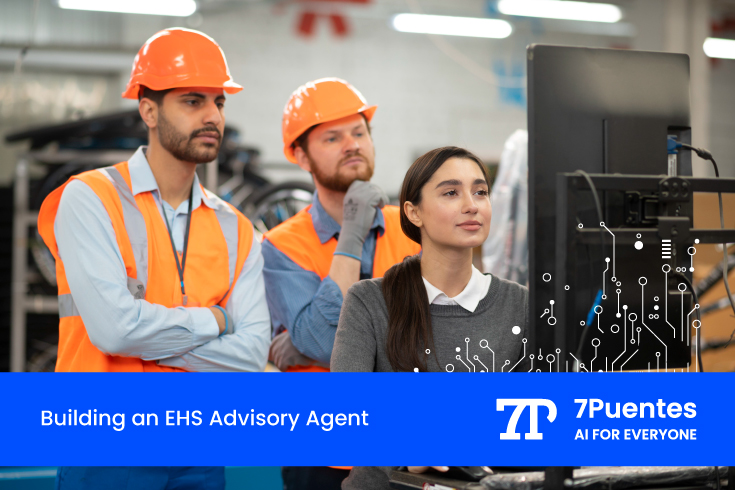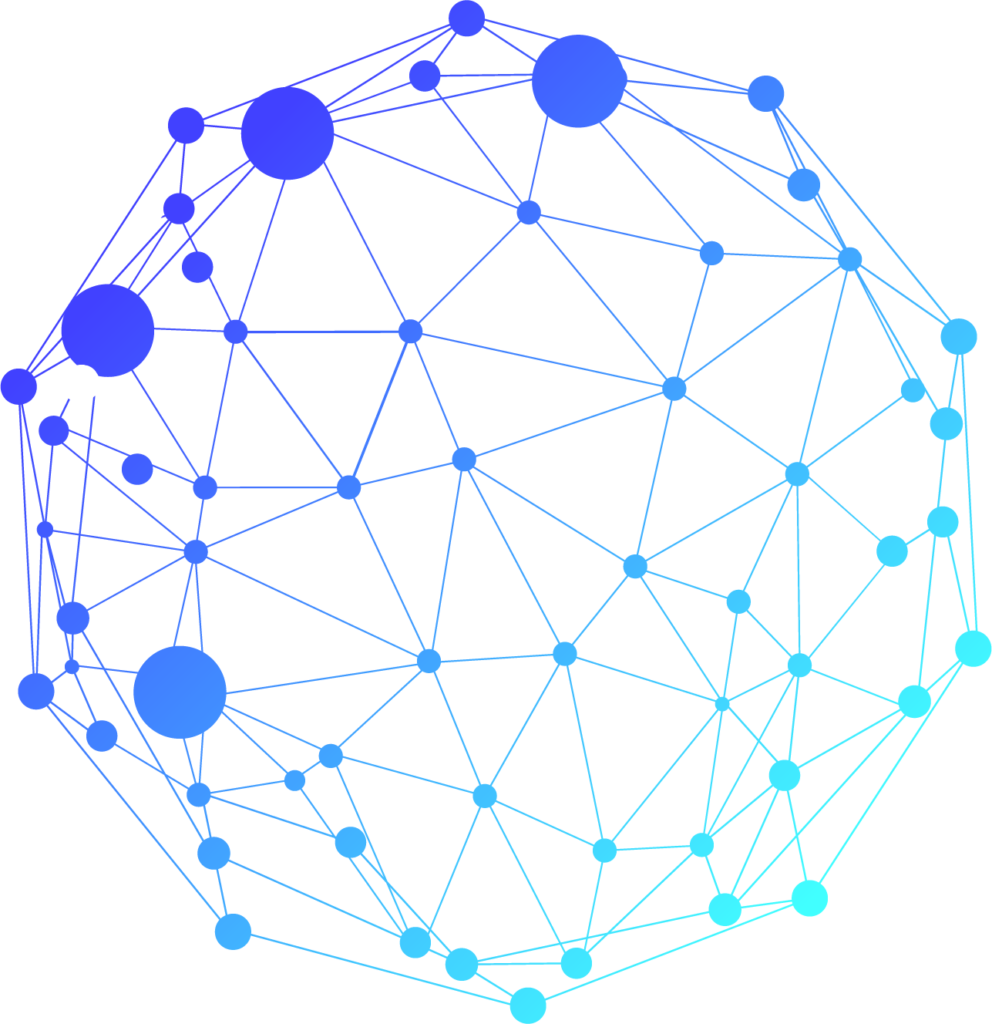Introduction EHS Advisory Agent
Environmental Health and Safety (EHS) is currently a set of policies and practices designed to protect employees, citizens, and the environment from the risks and negative impacts of a company’s activities. Its emerging connection with generative AI is unprecedented: there are conversational agents that can help human users with compliance, operational risk management, and incident detection with greater efficiency and speed. Discover the new possibilities for the EHS industry in this paper.
Conversational agents in Generative AI are more than a passing trend: they are such a powerful tool that they are transforming industries across the board, with a particular impact on the energy industry. Virtual agents are helping oil and gas companies provide better service, operate more efficiently, and stay competitive in a fast-paced world. In particular, large language models, commonly referred to as LLMs, have quietly evolved from independent assistants to quasi-autonomous agents capable of delegating tasks and adjusting their behavior in response to input from their environment or from themselves.
These new quasi-agents can now run applications in real time and answer increasingly complex questions. Instead of being explicitly told how to solve a problem, the next generation of AI will be tasked with solving it on its own.
One of the biggest challenges is managing large amounts of information and keeping up with changing regulations and standards. In this regard, Gen AI can help by interpreting rules through its natural language skills, managing observations, and detecting safety and hygiene incidents in industrial plants.
What makes Gen AI unique for EHS?
A typical company typically has three ways to create value: the first is to sell more or increase revenue, the second is to reduce costs, and there is a third, which is to know how to manage risk for the company itself. It is about predicting and reducing risk, which would be selling the same thing but in a more predictable way, with the same cost, but controlling any incident or economic loss to the company.
This is where the importance of Environmental Health and Safety (EHS) comes in, focusing on the policies, programs and practices that are implemented in companies to ensure that their operations are safe, healthy, controlled and respectful of the environment.
In this regard, industries (and especially the energy industry) are affirming that it is not only about profitability, but also about reducing risks (to reduce human and material losses) and increasing the sustainability of the company, which is a value in itself.
What is the role of Gen AI and LLM in this process? The raw material for data is text, text that can be expressed as standards or as incident reports and health and safety observations.
Given that Gen AI’s strength is in reading and interpreting text, and also in helping to find patterns in processing natural language, the application possibilities are enormous.
And what are the characteristics of EHS data that large language models work with? We can highlight the following characteristics:
- The information is very sensitive, private, and does not normally leave the company.
- The information is multi-lingual, since it usually involves companies that operate in multiple countries and cultures.
- It is technical information specific to the domain, but its management must be adapted to real situations of company operations and procedures.
Although LLMs are effective at answering complex questions, they were trained with generalist information. When working with technical information from the company, it is not only about adapting databases and enriching knowledge with RAG (Retrieval Augmented Generation) techniques, but the main issue is to be able to deal with real situations in the company. For example, if we are talking about a risk in a lifting maneuver, the word «lifting» is a word that does not usually exist in the vocabulary of an LLM, at least not in the sense that the company understands it. It is a heavy lifting maneuver typical of the industrial and construction sectors. Getting the LLM to understand this is a challenge in itself.
If we are talking about health and safety in Buenos Aires, a clear example is the safety reports of the electricity companies, which require very technical information that is probably not in a typical LLM in Spanish. But beyond these peculiarities, it can be solved.
Because although ChatGPT is a public service, there are services that are sold privately, they have a private cloud, and you can also use open source models that are already multilingual and work quite well. Still, there are languages that are not yet loaded and translations need to be done.
And the domain information can be solved with fine-tuning, adding specific documents to the database that we have. And there are other techniques related to RAG to add more context to the vocabulary.
For example, if the model doesn’t know what «lifting» is, but I add the definition of «lifting» to the model, then the safety observation can be better understood. If the word «fire extinguisher» is in the safety observation, but the LLM doesn’t know what a fire extinguisher is, then new information from the glossary can be added. Ultimately, the fine-tuning would be for the LLM to realize that fire extinguisher and fire douser are the same thing, because he has received many texts with the word «fire extinguisher» near fire situations.
Three typical use cases
When building an EHS advisory conversational agent, there would be three use cases or specific functionalities in this area:
- Existing regulations in the company: basically a Health & Safety RAG where the user can ask how a cargo vehicle should be parked, or how to operate this industrial machine. And it gives us step-by-step instructions for the procedures. And it also serves to train the user, that is, to help train them in safety standards and to keep them up to date on regulations, which are usually updated frequently.
- Company incident reports: This is about helping to upload observations, using the resources that Gen AI provides us to complete missing information, or speeding up the process between the EHS system and the person reporting the incident. The advantage is that it can be reported by audio message, by chat, at any time and any place where the employee is, even in a remote location with respect to the industrial plant. Let’s say we’re in a storm or a flood, and we’re driving through a city, and we can report where there are loose wires that are a real hazard, or there’s a tree that’s about to fall, that’s hanging, and we take into account whether it’s a busy street or a little-traveled street. Or if there is a cable that is practically touching the ground, we need to know if there is a puddle of water nearby. We can ask for this or the LLM can complete it for us so that the report is correct and as complete as possible and then determine the real risk assessment for these incidents.
- Reading and analyzing reports to determine risks: in this case, the analyst becomes a «bottleneck» when the number of incidents is very large and he has to make a detailed professional assessment of them. And if there are also eight different languages, the analyst has to go around modifying observations in different documents and centralize this information. Having an analysis supported by an LLM helps to generate automatic recommendations and to be able to comply with reports in real time, which greatly improves the productivity of analysts and the performance of operations. And it helps to find patterns of value between texts, i.e. new useful knowledge. The main problem is that if analysts want to train in EHS, they have to read hundreds of pages of bibliography and new regulations, and they may not have enough hours in the week to read them.
It is not about Gen AI summarizing all that knowledge for us, but rather being assisted by these models that can read a text faster than we can. It is a way of incorporating that technical knowledge more quickly and effectively. Undoubtedly, the abundance of information is a problem. In this capacity to work with large amounts of text, a specific capacity to analyze and reason with technical information from the company, especially from EHS, will appear. If we have 50 incidents in the same place, the model will try to summarize them, design a trend and try to find a pattern between them, a common factor. This is where Gen AI makes a big difference.
7Puentes’ strategic approach to Gen AI for EHS
At 7Puentes, we are already at the forefront of applying artificial intelligence tools and methods to companies in the energy sector. We have a deep understanding of the business and problems of EHS.
We understand that technological changes must put these companies in a position of proactivity, taking advantage of technology and not postponing these issues. This means building customized solutions and adapting processes with the human factor at the center.
It is not that the EHS analyst will disappear, far from it, but the process, the application of standards, the handling of incidents and the current interfaces will change a bit. In this aspect, it is not only necessary to cure and clean the data so that it is sufficiently correct to develop the models, but also to understand that LLMs can hallucinate, that is, give inaccurate information. In this aspect, the goal is to make the model robust enough to work with text and avoid these hallucinations.
Basics of our approach in Gen AI for EHS:
- Collaborate with EHS analysts.
- Work with historical data and build a custom model based on the state of the art.
- Fill the model with relevant company information.
- Customize processes to keep a human in the loop.
- Build interfaces to current EHS systems.
Give us a call to help you build a top-level custom model that acts as an advisory agent for EHS.


